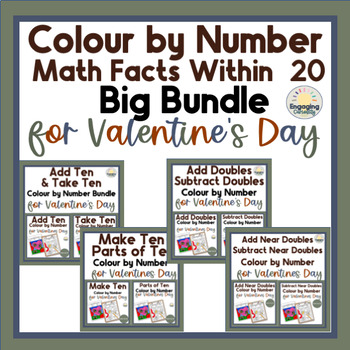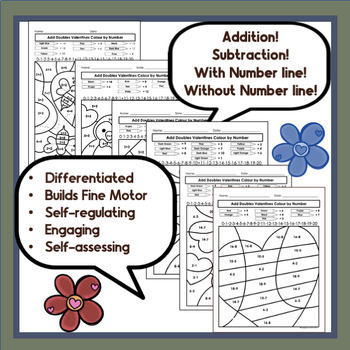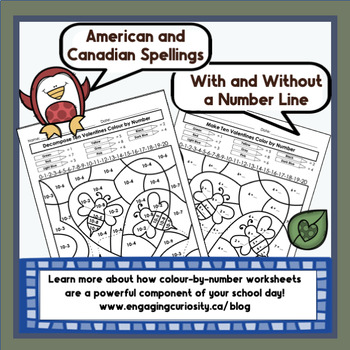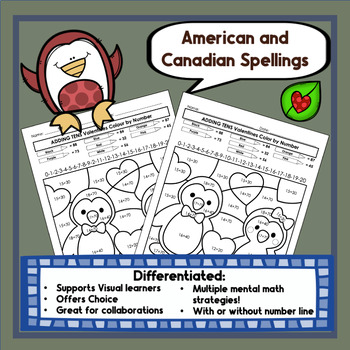Valentine's Math Facts Within 20 Color-by-Code Bundle for Differentiated Math
- Zip
Products in this Bundle (8)
showing 1-5 of 8 products
Description
Are you looking for a way to create seasonal differentiated math stations? Color-by-code activities are a no-prep way to start. Engaging Curiosity's Valentine's Math Facts Within 20 Bundle for Differentiated Math Stations is here to help.
This bundle includes coloring sheets for multiple math strategies so your students can work within their ability level.
Within this bundle you will receive colouring pages for :
- Make Ten
- Parts of Ten
- Adding Doubles
- Subtracting Doubles
- Adding Near Doubles
- Subtracting Near Doubles
- Add Ten
- Take Ten
Within each of those resources your students have a choice of 6 pictures, so you can use this resource on repeat for a week or two.
This bundle is great for developing multiple skills for your students:
- math fact practice
- social skills practice (coloring is calming)
- fine motor development
- coloring practice
Ways to use:
- differentiation
- math centers
- morning work
- no prep sub plans
- spiral review
- homework folder
- community building (the larger you print it the more students can work on it)
To learn more about the benefits of colour by code worksheets, check out my blog:
Math FactsColour by Code: How to Boost impact Now!
To learn more about the connection between growth mindset, differentiation and games check here.
Let's Connect
✅ Store
✅ Blog
✅ Youtube
Follow my store here.
Copyright ©Engaging Curiosity All rights reserved by author. This product is to be used by the original downloader only. Copying for more than one teacher, classroom, department, school, or school system is prohibited. This product may not be distributed or displayed digitally for public view. Failure to comply is a copyright infringement and a violation of the Digital Millennium Copyright Act (DMCA). Clipart and elements found in this PDF are copyrighted and cannot be extracted and used outside of this file without permission or license. Intended for classroom and personal use ONLY. See product file for clip-art and font credits.
Buy now and receive - Valentine's Math Facts Within 20 Color-by-Code Bundle for Differentiated Math





